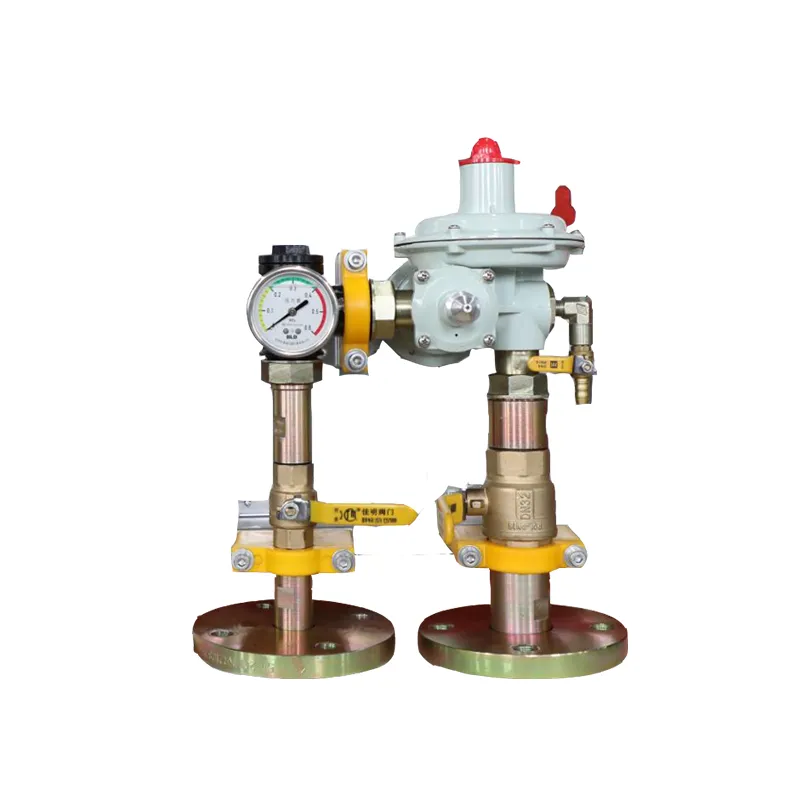
Nov . 23, 2024 19:55
Back to list
Measuring Gas Levels for Accurate Environmental Assessments and Safety Protocols
The Measurement of Gases Techniques and Applications
The measurement of gases plays a crucial role in various fields, including environmental science, industrial processes, and scientific research. Understanding the properties and concentration of gases is essential for ensuring safety, optimizing performance, and studying atmospheric phenomena. This article delves into the techniques used for measuring gases and their diverse applications.
One of the most fundamental aspects of gas measurement is understanding its physical properties, such as pressure, temperature, volume, and concentration. The Ideal Gas Law (PV = nRT) provides a theoretical framework for understanding how gases behave under different conditions. However, practical measurement often requires more specialized methods.
Techniques of Gas Measurement
1. Gas Chromatography (GC) This technique is widely used to analyze the composition of gas mixtures. It works by separating the different components of a gas sample as it passes through a column filled with a stationary phase. Each component interacts differently with the stationary phase, allowing for precise identification and quantification. GC is essential in environmental monitoring, quality control in the food industry, and forensic analysis.
.
3. Infrared Spectroscopy Infrared (IR) spectroscopy is used to measure concentrations of specific gases by detecting their unique absorption of infrared light at particular wavelengths. This technique is particularly effective for analyzing greenhouse gases like carbon dioxide and methane, contributing to climate change research by providing insight into atmospheric compositions.
قياس الغاز

4. Electrochemical Sensors These sensors are commonly employed for the real-time monitoring of hazardous gases, including carbon monoxide and sulfur dioxide. They work by measuring the electrical current produced during a chemical reaction with the target gas. Due to their portability and relatively low cost, electrochemical sensors are widely used in industrial safety applications and personal gas detectors.
5. Laser-Based Techniques The use of lasers for gas measurement has grown in recent years. Techniques like Tunable Diode Laser Absorption Spectroscopy (TDLAS) provide high sensitivity and can measure gas concentrations in real-time. These methods are becoming increasingly important in atmospheric studies and emissions monitoring.
Applications of Gas Measurement
Measuring gases has critical applications in various sectors. In environmental science, it is vital for assessing air quality and monitoring pollutants that may harm human health and the ecosystem. In the industrial sector, effective gas measurement ensures operational efficiency and compliance with safety regulations, especially in processes involving flammable or toxic gases.
Additionally, gas measurement techniques contribute to scientific research, enabling studies on climate change, atmospheric chemistry, and even astrophysics. For instance, understanding the composition of the atmosphere on other planets can provide insight into their geological and potential biological processes.
Conclusion
The measurement of gases encompasses a wide array of techniques, each tailored to specific applications and requirements. From ensuring environmental safety to advancing scientific knowledge, the ability to accurately measure gases is essential in our increasingly complex world. As technology continues to evolve, so too will the methods and applications of gas measurement, paving the way for innovations in science and industry.
Next:
Latest news
-
Safety Valve Spring-Loaded Design Overpressure ProtectionNewsJul.25,2025
-
Precision Voltage Regulator AC5 Accuracy Grade PerformanceNewsJul.25,2025
-
Natural Gas Pressure Regulating Skid Industrial Pipeline ApplicationsNewsJul.25,2025
-
Natural Gas Filter Stainless Steel Mesh Element DesignNewsJul.25,2025
-
Gas Pressure Regulator Valve Direct-Acting Spring-Loaded DesignNewsJul.25,2025
-
Decompression Equipment Multi-Stage Heat Exchange System DesignNewsJul.25,2025

